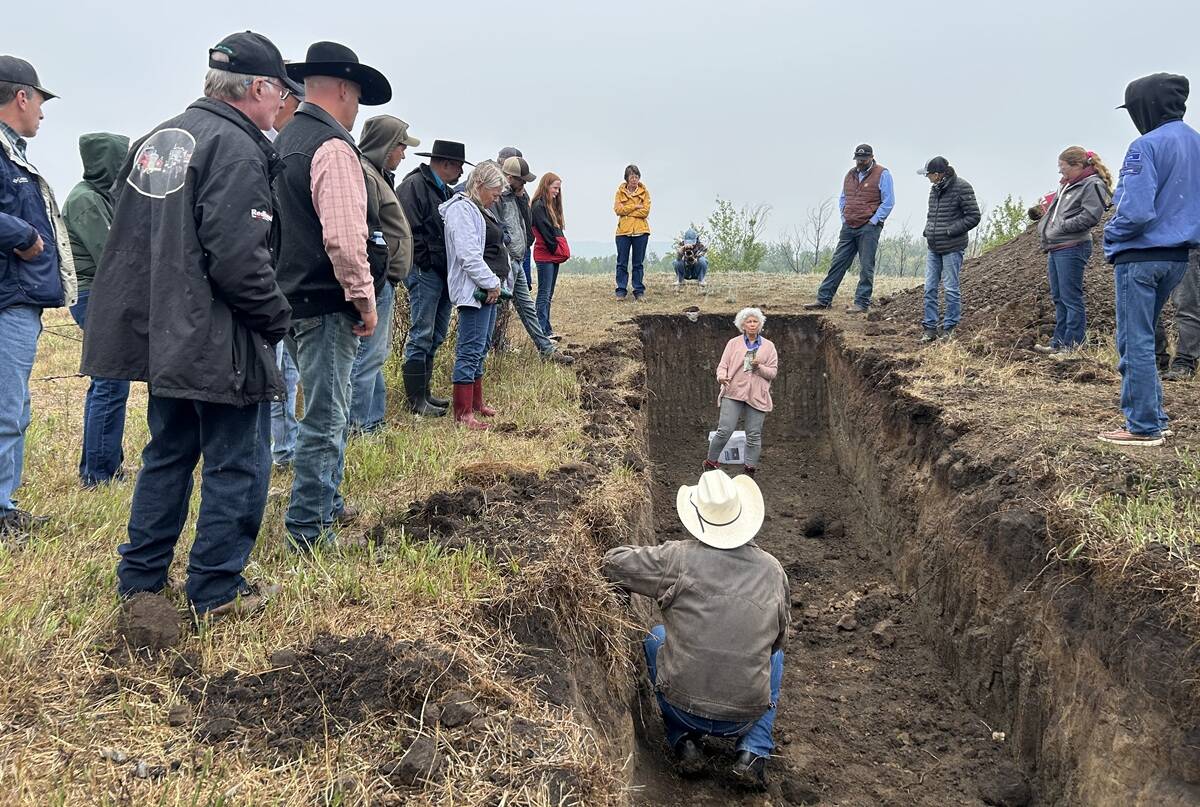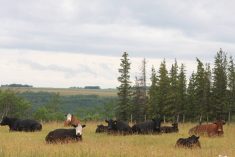It may seem facetious to be commenting on trade negotiations at a time when the bottom is still falling out of most cattle markets but let’s say it’s a long-term view.
When speaking of the Canada-EU trade deal, or more properly the Comprehensive and Economic Trade Agreement (CETA), long term is the only way to look at it.
After years of crusty negotiations it seems almost inconceivable that one of Belgium’s six regional parliaments, Wallonia, could demand more concessions at the last moment, and bring the whole process to the brink of collapse.
Read Also

Improving soil health on the ranch
Yamily Zavala, PhD, talks soil health for farmers and ranchers at a grazing club field day at Paradise Hill, Saskatchewan.
A Canadian comparison might be if a couple of counties on Prince Edward Island at the last minute called a halt to the deal on behalf of Canada.
As this issue was going out the door, the Belgians had agreed on a compromise that, according to media reports, would suspend the private arbitration of dispute settlements and provide greater protection to EU farmers.
These changes still had to clear the Belgium parliament and be ratified by the 27 other EU governments, before they could even be put before Canada. One can only hope Prime Minister Trudeau and Trade Minister Freeland take a good hard look at these last-minute changes before they sign off on this agreement.
About the only thing clear from this mangled negotiation is the fact that it will be some time before it comes into force, if ever.
The small number of producers and importers interviewed for our story on CETA this issue will certainly be happy to see the treaty signed. So far, Canadians have had to carve out a share of the duty-free quota that we share with the U.S., Australia, Argentina and several other countries. This treaty would give Canada 60,000 tonnes tariff free, all to itself.
From the point of view of most Canadian beef producers, however, they aren’t likely to care too much one way or the other.
There has never been any thought of Europe removing its restrictions on beef from cattle treated with hormone implants.
But that’s not the only restriction that will likely limit Canadian access to the tariff-free beef quota that is promised under this agreement.
According to the Canadian Cattlemen’s Association the technical negotiations on market access requirements for the EU still remain a challenge. The EU is still stubbornly refusing to accept the safety of antimicrobial washes that Canadian packers use to clean and disinfect hides, carcasses, cuts and trim during processing.
Without an agreement on the use of carcass washes it is unlikely any of the larger Canadian plants will have much interest in expanded trade with the EU, no matter how much tariff-free quota or hormone-free cattle are available.
At this point, Mark Klassen of the CCA says the only avenue available to gaining acceptance of the carcass washes is to make submissions to the European Food Safety Authority. Industry representatives have started this process but the expectation is it will take at least another year to get through this first step.
Assuming the science is approved by the food safety authority, and that is far from a given, Canada would still need to seek approval for this change in requirements from each member state at the political level through the European Commission.
“The timeline for this aspect is uncertain and in the past requests such as those made by the U.S. for feed safety interventions for poultry simply never progressed further,” notes Klassen.
The upshot of all this is that even if Canada and the EU did sign this agreement the only people it would affect would be the people who already have EU-ready cattle in place to be slaughtered at an EU-approved plant, which is not a long list.
I have no idea how many people or cattle this would involve but it can’t be too many given our beef sales to the EU over the past year (in Canadian dollars).
Belgium, ironically, hasn’t bought any beef from Canada in the last two years, although it did spend nearly $500,000 in 2013.
As for the rest here are Europe’s purchases of Canadian beef and veal last year: Austria (0), but to be fair Austria imported between $70,000 and $150,000 over the previous five years; Bulgaria (0); Croatia (0); Cyprus (0); Czech Republic (0); Denmark ($162,338); Estonia (0); Finland ($604,473); France ($2,096,118); Germany (0); Ireland (0); Italy ($13,775), but purchased from $2.3 million to $1.3 million per year between 2011 and 2014; Latvia (0); Malta (0); Netherlands ($3,778,904); Poland (0); Portugal (0); Romania (0); Slovakia (0); Slovenia (0); Spain (0); Sweden ($2,862); U.K. (0), it used to buy $1.0 million to $2.5 million per year but dropped off the last two years.
In 2015 the EU in total bought $6.66 million worth of beef and veal from Canada, making them our sixth-largest export market for that year, well behind the U.S. China, Mexico, Japan and Hong Kong and just slightly ahead of the Philippines.
Since there is obviously the potential for sales in a handful of the 28 countries I suppose we should not totally discount the EU as a future market for our beef, but you will have to be willing to pay the price to go after it.
As I mentioned before, this is a long-game view.
















